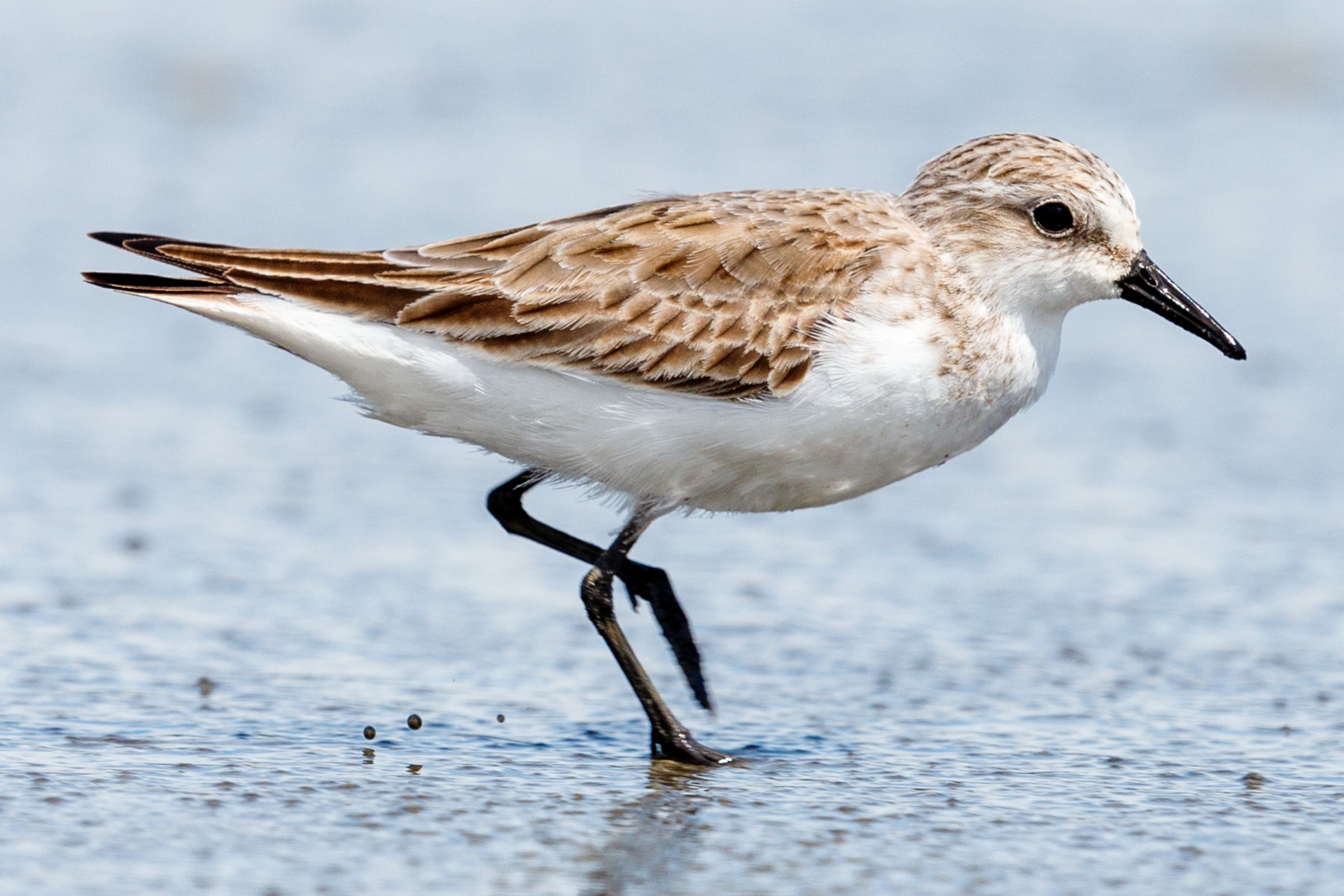Red-necked stint
(Calidris ruficollis)

Description
The red-necked stint (Calidris ruficollis) is a small migratory wader. The genus name is from Ancient Greek kalidris or skalidris, a term used by Aristotle for some grey-coloured waterside birds. The specific ruficollis is from Latin rufus, "red" and collum, "neck". These birds are among the smallest of waders, very similar to the little stint, Calidris minuta, with which they were once considered conspecific. The red-necked stint's small size, fine dark bill, dark legs and quicker movements distinguish this species from all waders except the other dark-legged stints. It measures 13–17 cm (5.1–6.7 in) in length, 28–37 cm (11–15 in) in wingspan and 21–51 g (0.74–1.80 oz) in body mass. It can be distinguished from the western sandpiper and the semipalmated sandpiper in all plumages by its combination of a fine bill tip, unwebbed toes, and longer primary projection. The breeding adult has an unstreaked orange breast, bordered with dark markings below, and a white V on its back. In winter plumage identification is difficult, although it is shorter legged and longer winged than the little stint. Juveniles have more contrasting mantle plumage and weaker white lines down the back than their relative. The call is a hoarse "stit". Red-necked stints are strongly migratory, breeding along the Arctic littoral of eastern Eurasia and spending the non-breeding season in South East Asia and Australasia as far south as Tasmania and New Zealand. They are rare vagrants to western Europe, with most records from Ireland. They are often seen in western Alaska and occasionally elsewhere in the Americas. Red-necked stints are highly gregarious and will form flocks with other small Calidris waders, such as sharp-tailed sandpipers and curlew sandpipers in their non-breeding areas. Their breeding habitat is tundra. They nest on the ground and breed from spring to summer. They forage in wet grassland and soft mud, mainly picking up food by sight. In their non-breeding habitat they feed on intertidal mudflats and along the muddy margins of freshwater lakes. They mainly eat insects and other small invertebrates. Calidris is a genus of Arctic-breeding, strongly migratory wading birds in the family Scolopacidae. These birds form huge mixed flocks on coasts and estuaries in winter. They are the typical "sandpipers", small to medium-sized, long-winged and relatively short-billed.
Taxonomic tree:







